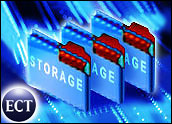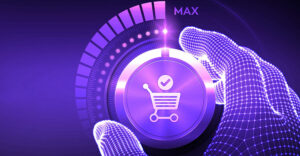
It is not unusual for small to medium business managers to emulate Lewis Carroll’s Mad Hatter, wearing six or eight hats simultaneously in their business efforts. Sometimes, the hat hardest to wear is IT management.
All businesses, large and small, run on information. When that information is lost or access is interrupted, the impact on a business can be critical and sometimes fatal. Forty percent of businesses suffering a business interruption fail within five years, according to Gartner.
Potentially fatal data loss for a business puts a priority on protecting and securing business information. Small and medium-size businesses (SMBs) are often at a disadvantage when trying to protect valuable business information, as they typically lack the budgets and internal IT of large enterprises.
What to Back Up
Unanticipated loss of data is the reason to back up. The usual reasons considered for failure are earthquake, fire and flood, but in fact the more likely reasons are hardware failure, software failure, viruses and worms, and human error/mishandling.
With all the data the SMB has, what should be backed up? The temptation would be to back up everything whether it is a business record or not. However, there is little business value in your aunt’s photos from the Grand Canyon. Efforts should focus on records that change.
Achieving Backup Goals
SMB data backup must be goal-oriented. The three types of backup are full (which backs up all files regardless of whether they have changed); differential (which backs up all files modified since the last full backup);and incremental (which backs up only files that have changed since the last backup of any kind).
The first step is to identify and locate the files and folders to be included in a backup. Then, it is important to calculate the amount of storage space necessary to back up those files and folders, and possibly operating systems and application software. Next, the SMB must establish how large a backup window is available for the backup.
Determine business data growth rates — reflect on a one- and two-year cycle. This will help the SMB select products that will scale over time. The national averages vary between 25 percent and 50 percent growth per year, depending on the nature of the business.
Backup solutions come in two parts, the backup platform and the backup destination. Selecting the backup software must involve the goals of capacity management and scalability discussed earlier. However, there are other attributes that need to be discussed to make a sound business backup decision.
Common Issues
Reliability is an obvious attribute and should go without saying. However, solutions are a mixed bag, and the buyer needs to be aware of the degree of reliability.
Longevity is likewise an issue. The buyer must be certain that the solution will last over time. Some backups will not have to be accessed for some time, and the software platform will still need to operate.
Ease of use is going to be important both for the backup platform and the backup destination. In many SMB settings, the person charged with the backup is not an IT professional.
Removability and portability are important elements of the backup destination. Since backup is a disaster recovery tool, an SMB should be able to remove critical data from the main business location at some point, where earthquake, fire, flood or even a human might damage it.
Cost is an issue. In calculating cost, it is best to include the platform, the destination, the time spent in backup versus the time it would take to rebuild lost data in a data outage situation, staff time investment and any relevant overhead costs.
Backup Destinations
A careful examination of the different destination media will chart a course to the optimum SMB destination: removable disk.
CD, the well-known compact disc, is an optical disc capable of storing data, although limited to a capacity of 650 to 850 megabytes. DVD is visible in the data storage market as well and while the capacity is higher than CD, it is still limited to between 4.7 and 10 gigabytes and I/O speeds may not fit the backup window. Additionally, CD media is fragile; scratching the surface loses data. DVD media is resistant to scratches, but is limited to a single level of error correction.
Tape drives have data capacities of anywhere from a few hundred kilobytes to several gigabytes, and varying transfer speeds as well. While tapes are a very portable removable storage solution, the disadvantage of tape drives is that they are sequential-access devices, which means that to read any particular block of data, you need to read all the preceding blocks. The wait to restore essential files in a disaster recovery situation would be unacceptable. Longevity of the media is also an issue.
Fixed disk is another potential option. It is familiar, high speed and simple. One fundamental challenge for hard disk technology is to prove its ability to provide cost effective off-site security, something of a hardship for a fixed disk technology. Disk drives are also less scalable. Unlike tape and removable disk, fixed disk technologies are not as portable as the alternatives.
Removable disks allow the SMB to enjoy the economics of low cost, rugged media and the ability to preserve backup data away from the primary storage. Storage vendors offer removable disk with capacities reaching from 40 to 160 gigabytes. The most pervasive “disk to removable disk” storage line is based on ProStor Systems’ RDX technology. RDX technology is a 2.5-inch removable Serial ATA hard drive that looks and acts like a tape cartridge, but performs with the speed and reliability of fixed disk.
The RDX cartridge alerts the SMB user if there is a problem either with the backup or the media so that when data recovery is performed, there are no surprises. ProStor will refresh its cartridge capacities and speeds as new mobile hard drives are released from suppliers and RDX drives allow SMBs to upgrade cartridges without buying new drives.
Recovery from an RDX backup takes milliseconds. It can be argued that ProStor Systems’ RDX technology takes every positive aspect of both tape and disk and combines them into one versatile product. At the same time, RDX sheds the negative characteristics of each media. RDX drives are available from Dell, Imation and Tandberg Data.
Selection Is Critical
In a world where litigation is commonplace, regulations are endless and business interruption can be business extinction, SMBs suffer as much or more vulnerability than enterprise data centers. This makes the selection of the best backup tools critical.
The solution must scale over time, be simple to use and fit an SMB budget. Implementing a structured plan with removable media provides an SMB solution that is easy, affordable, scalable and reliable. It could mean the difference between a managed solution and a trip through the looking glass to a Mad Tea Party.
Selection Criteria Basics
- Buy the most reliable backup device and media — your business depends on it.
- Plan for the optimum high-speed backup window.
- Remember the need for fast, reliable restore.
- Find something that is scalable, easy to use and affordable.
- Take data off-site.
- Rotate media.
Mark Ferelli is a freelance storage industry analyst.












































Is there any way to restore my lost data from Windows 10, Seagate 1TB hard disk, I tried using Recoverit Recovery tool, is there any other alternative for recoverit.